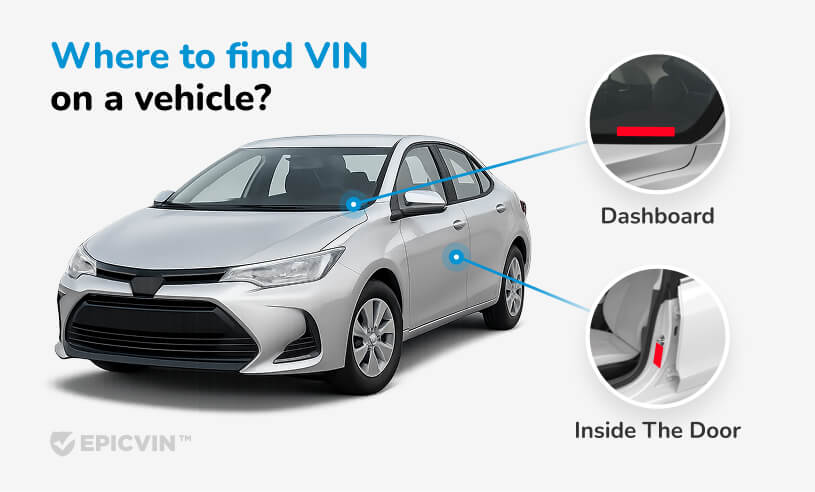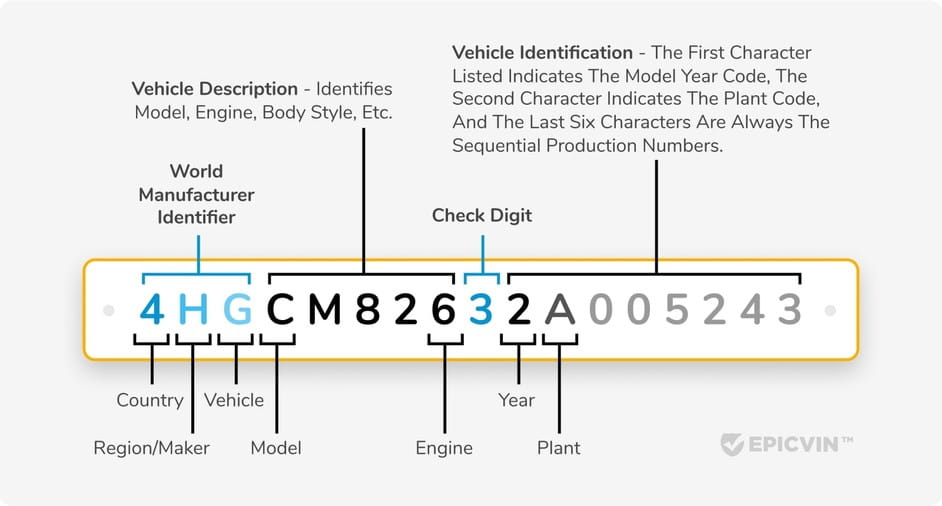
How to Read a VIN Number Like a Pro
From understanding the VIN number breakdown to uncovering a vehicle’s history,...

Free Acura VIN Decoder! 🚗 See specs, build sheet, recalls basic history—no sign-up. 🛡️✅ Need accidents, mileage, title? Upgrade in one click.
Looking for the VIN?
Here is there you’ll find it:

Since 1981, every vehicle has received a unique 17-character vehicle identification number following the ISO Institute standards. Our VIN decoder transforms cryptic digits into valuable specifications, helping buyers identify engine type, year, and potential security issues before purchase.
Interpreting your Acura VIN number takes just minutes with our streamlined process.

Your Acura VIN appears in multiple locations for easy identification.
| Key Risk | Impact on Buyers | Mitigation Steps |
|---|---|---|
| Theft Risk | Acura theft claims are ~10% higher than average for SUVs (NICB data) | Check VIN alerts, install tracking system |
| Unrepaired Safety Recalls | ~295k Acura vehicles under 2025 software or MDX stalling recalls | Always look up the VIN for open recall alerts |
| Depreciation Over Time | Used Acuras dep. ~40% in the first 5 years (auction trend data) | Compare year/mileage for fair pricing |
| Odometer Rollback Fraud | About 2% of used Acuras show odometer discrepancies at auctions | EpicVIN mileage history + DMV records |
| Hidden Flood or Salvage History | Flood/salvage tags found in ~1.5% of listings (NICB data) | VIN title checks and photo review |
How to minimize risks: Check your VIN for lien history, recalls, and mileage records before buying. Use reports from official databases for accurate vehicle assessment.
| Issue | Affected Models & Symptoms & Avg Repair Cost (USD) |
|---|---|
| Transmission Gear Wear | 1999-2002 TL/CL (≈ 40-60k mi): slipping, shift failure; repair ≈ $2,500-3,500 |
| VCM-Related Engine Problems | 2013-2015 Pilot, 2013–2017 Odyssey: misfires, oil consumption, expensive fixes ≈ $2,000-4,000 |
| 3.5L V6 Bearing Failures | 2016-2020 MDX/TLX: engine failure risk due to rod bearings; rebuild ≈ $4,000-6,000 |

Each character in your vehicle's unique sequence tells a specific story.
There are some other details that Acura owners and buyers should know:
VINs from 2005-2008 RL models may trace back to a power steering hose fire recall.
Here's how our Acura VIN decoder interprets a sample sequence (using VIN: 19UDE2F30GA000926):
| Symbols | Sample | What It Reveals |
|---|---|---|
| 1 | 1 | The United States as the country of origin |
| 2 | 9 | Acura as a manufacturer |
| 3 | U | Passenger car vehicle type |
| 4-8 | DE2F3 | Sedan body style, engine type, restraint system, model line, and trim level |
| 9 | 0 | Check digit for validation |
| 10 | G | 2016 model year |
| 11 | A | Assembly plant location |
| 12-17 | 000926 | Individual vehicle serial number |
| Symbols | Sample | What It Reveals |
|---|---|---|
| 1 | J | Japan as the country of origin |
| 2 | S | Suzuki as a manufacturer |
| 3 | 2 | Motorcycle vehicle type |
| 4-8 | AC35S | Model line, engine type, displacement, and body configuration |
| 9 | 9 | Check digit for validation |
| 10 | P | 2013 model year |
| 11 | 5 | Hamamatsu, Japan assembly plant |
| 12-17 | 100768 | Individual vehicle serial number |
Year 2014
Make Acura
Model RLX
Fuel Type Gasoline
Engine 3.5L V-Shaped J35Y4
Made in JAPAN
Your Acura VIN reveals comprehensive vehicle details through our free VIN decoder system.
Emissions compliance: Verifies CARB-SULEV or federal emissions standards.
EpicVIN flags 2025 MDX Type S software recall models before dealers do.— Alex Black, CMO, EpicVIN
No, dealer allocation happens after manufacturing. VINs show plant location and build sequence, not distribution or dealer assignment.
VINs show model year and production sequence but not the exact build month. Manufacturing timing estimates require production schedule analysis.
Enter your VIN in our decoder to check the NHTSA recall databases showing Takata replacement status and completion records.
Acura doesn't manufacture SUVs in Canada. Most show "2" (East Liberty, Ohio) or "5" (Lincoln, Alabama) plant codes.
Your VIN links to NHTSA databases flagging vehicles within affected production ranges, though probe inclusion isn't directly VIN-encoded.
Position 8 contains engine codes identifying hybrid systems. Our decoder recognizes codes like "7" for MDX Sport Hybrid powertrains automatically.
VINs only show factory options, not dealer accessories. Check the original window sticker or service records for aftermarket additions.
Type S isn't directly encoded. Positions 4-8 create unique combinations that our decoder recognizes for performance variants like TLX Type S.
Check the windshield, driver's door frame, dashboard, hood area, or registration documents for locations.heck the windshield, driver's door frame, dashboard, hood area, or registration documents for locations.
Discover expert tips, news and advice on buying and maintaining used vehicles

From understanding the VIN number breakdown to uncovering a vehicle’s history,...

A no-damage accident today could mean unexpected expenses tomorrow. Find out h...

Here we will tell you how to find out car owner registration details